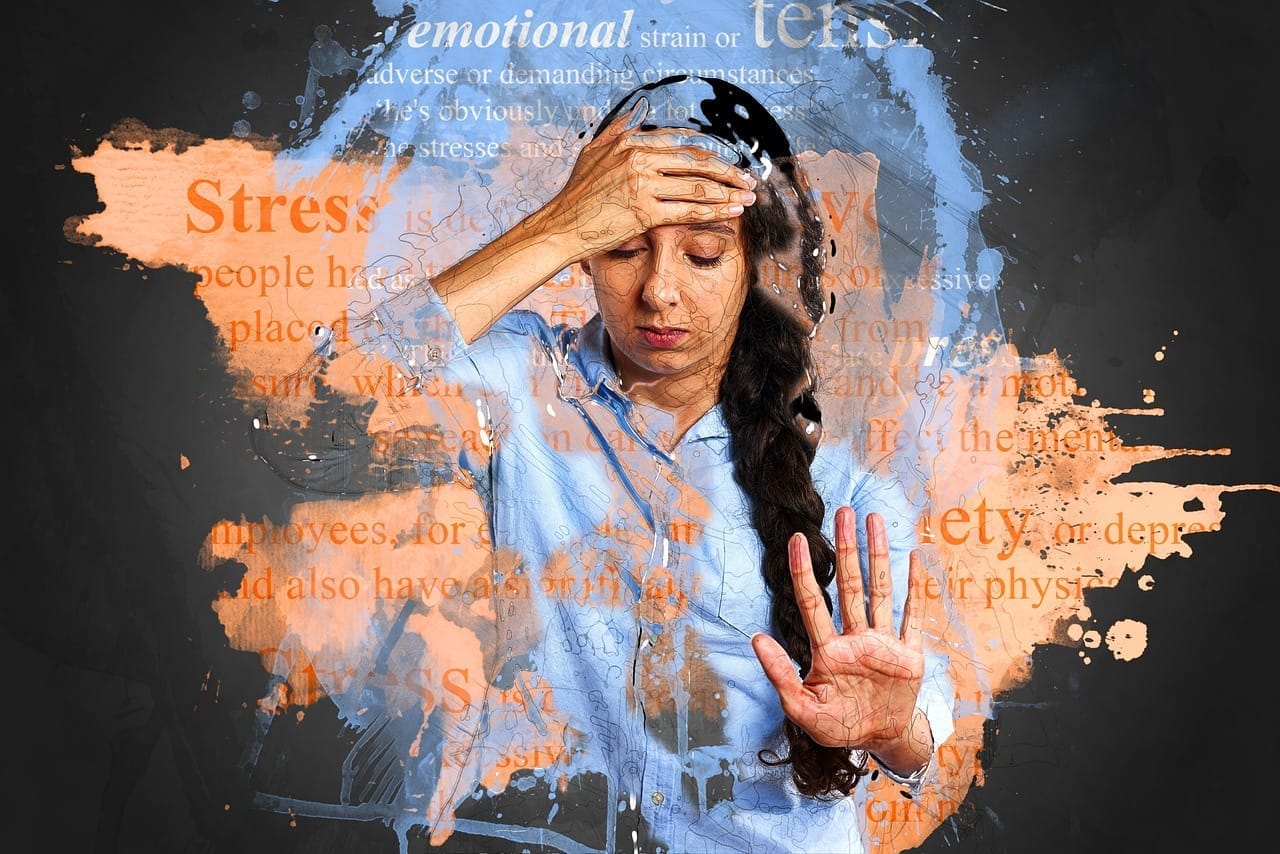Are you in North Carolina and looking for individual therapy or parent counseling?
Visit Flip Consulting and Counseling to schedule a free consultation
Written By Edla Prevette
Your Body Is Trying to Tell You Something: Reading the Signs That Could Transform Your Caregiving
Your shoulders have been creeping up toward your ears all day. Your jaw is clenched. There's that familiar knot in your stomach as you prepare to call your mom about her doctor's appointment. Your body is sending you signals – urgent messages about your stress, your capacity, your emotional state – but you're too busy thinking, planning, and problem-solving to notice.
As a sandwich generation caregiver, you've become an expert at living in your head. There are appointments to coordinate, medications to track, work deadlines to meet, and children's needs to manage. But what if your body – both yours and your aging parents' – holds crucial information that could make caregiving easier, less stressful, and more connected?
According to dance and movement mental health therapist Kim Bevans, learning to read body cues is one of the most overlooked yet powerful tools sandwich generation caregivers can develop.
Why Caregivers Get Stuck in Their Heads
"When you're caring for both the older and the younger, there's a lot of emotional work going on and then there's a lot of practical work going on," explains Kim, who has 15 years of experience helping people reconnect with their bodies. "That disconnection between the mind and the body might increase. People get really cerebral because there are a lot of problems to be solved."
This makes perfect sense. When you're suddenly responsible for coordinating care for multiple people, your brain goes into overdrive. You're constantly in crisis mode, reactive, trying to solve the next problem. As Kim puts it: "We go to the thinking brain mostly... and then they're probably bubbling up in all of these ways that they don't notice either because they're just so busy."
But here's what many caregivers don't realize: while you're busy solving problems with your mind, your body is processing all the emotional and physical stress – and it has vital information to share with you.

Understanding Somatic Awareness: Beyond Talk Therapy
Before diving into practical strategies, let's clarify what we mean by body awareness. Kim explains that "somatic" comes from the Greek word meaning "body," and it represents a different approach from traditional talk therapy.
"Embodiment, to me, I define that as being in the body and having experience of knowing that you have a body and that you're feeling from inside your body," she explains.
This isn't about replacing thinking with feeling – it's about integrating both. Instead of only processing your caregiving challenges cognitively, you're also paying attention to:
Physical sensations and tension
Breathing patterns
Energy levels
Emotional responses that show up in your body
Intuitive information your body provides
Think of it this way: You can grocery shop purely cerebrally (making a list, checking it off), or you can shop in an embodied way – noticing when you're getting tired, paying attention to which apple feels right in your hand, being aware of your body's signals as you navigate the store.
The Three-Step Process for Reading Body Cues
Kim outlines a practical three-step approach that can transform how you navigate caregiving relationships:
Step 1: Know What Keeps You Grounded
"What keeps you regulated or grounded when you are with your aging parents?" Kim asks. "Just taking the time just to identify that. And if you don't know, guessing, and then maybe trying it out."
Examples of grounding strategies:
Walking while talking on the phone (bilateral stimulation helps many people stay regulated)
Breathing very intentionally during difficult conversations
Using your hands for something tactile
Changing your physical position in the room
The key insight: Your body is probably already doing helpful things – you just need to become aware of them and use them intentionally.
Step 2: Recognize Your Personal Warning Signs
This is about developing awareness of your body's escalation patterns. What happens in your body when a conversation with your parent starts going south? What are your early warning signs?
Physical escalation cues might include:
Shoulders rising toward your ears
Jaw clenching
Voice pitch rising
Words becoming sharper or faster
Tightness in chest or stomach
Shallow breathing
But equally important – notice when things are going well:
Heart feeling expansive
Shoulders relaxing
Breathing becoming deeper
Feeling of openness in your chest
As Kim notes: "The body is doing all sorts of things when things are maybe not going in the direction that we want to go... but also when things are going really well."
Step 3: Become a Detective for Your Parent's Body Cues
This is where caregiving becomes truly collaborative. You're not just managing tasks – you're tuning into the nonverbal communication that makes up the majority of human interaction.
"What signals are you getting from your aging parents?" Kim asks. "They could be things that have been there maybe for all your life and they could be new things."
What to watch for:
Changes in posture or facial expressions
Vocal tone shifts (beyond the words they're saying)
Energy levels throughout the day
Physical responses to different topics or activities
Signs of confusion, frustration, or contentment
Practical Applications: Body Cues in Action
The Phone Call Strategy
Kim shares how simple positioning can change everything: "When you have to call them on the phone, is it better if you walk as you talk? Do you breathe very intentionally when you do that? Do you do things with your hands?"
One caregiver discovered that putting her mother on speaker phone instead of holding the phone to her ear completely changed her emotional response. "Something about her voice coming through my ear was... I felt almost trapped by it," she realized. The speaker created helpful distance and shifted her mindset.

Physical Positioning Matters
"Where also do you feel comfortable when you're sharing space with them? How close do you want to be?" Kim asks. "What side you sit, where you place your body, knowing what feels good to you."
Consider:
Do you prefer to stand or sit during difficult conversations?
Which side of your parent feels more comfortable to you?
Do you like to be at eye level, higher, or lower?
How much physical space helps you stay regulated?
Reading the Subtle Signs
Kim gives a perfect example of body cue detection: noticing when an aging parent hasn't heard something. "I could tell by my mother-in-law's body language that she did not hear what the person said. That's kind of an obvious example, but it's still an easy place to start."
Other subtle cues to watch for:
Facial expressions that indicate confusion (even when they don't ask for clarification)
Body language that suggests fatigue or discomfort
Signs that they're feeling overwhelmed or anxious
Posture changes that indicate mood shifts
The Power of the Body-Mind Dance
When you combine all three steps, something powerful happens: "Then that dance can really start to happen," Kim explains. "We're tuning to what they're putting out there non-verbally, most of communication is non-verbal, and then we're more easily able to respond both verbally and non-verbally."
This creates a feedback loop where:
You're more aware of your own regulation
You can catch yourself before escalating
You're reading your parent's actual state, not just their words
They feel more seen and understood
Interactions become easier and more connected
Beyond Individual Interactions: Recognizing Patterns
Body awareness becomes especially valuable when you consider that some things change with aging and some things stay the same. Kim emphasizes the importance of knowing your parent's baseline: "Has dad always done that?"
This awareness helps you:
Distinguish between personality traits and new challenges
Recognize when something neurologically might be changing
Respond appropriately to behaviors instead of taking them personally
Adjust your communication style based on their current capacity
The "Butterflies" Principle: Validating Body Messages
Kim makes an important point about how we dismiss body wisdom: "I was more raised with the like, oh, sort of brush it aside. Right. You're fine. Oh, that phrase. You're fine. If we change it to talking about, well, yeah. You have butterflies. It's nervous. You're doing something new. You're doing something hard. Okay, how can we do it anyway?"
This applies directly to caregiving. Instead of dismissing your physical stress responses ("I'm fine, I can handle this"), try:
"Yes, I feel tension in my shoulders. This conversation is challenging."
"My stomach is tight because I'm worried about Dad."
"My heart feels heavy watching Mom struggle with this."
Validating these responses doesn't mean you can't handle caregiving – it means you're gathering important information about your capacity and needs.

Practical Implementation: Starting Small
If body awareness is new to you, Kim suggests starting with what feels "good or okay" rather than jumping into difficult sensations. "I don't even usually start with a body scan in session number one... Just starting there, start friendly."
Week 1: Basic Awareness
Notice one physical sensation during each caregiving interaction
Pay attention to your breathing during phone calls with parents
Identify one thing your body already does that helps you stay calm
Week 2: Pattern Recognition
Start tracking: What happens in your body when conversations get difficult?
Notice your parent's energy patterns throughout the day
Experiment with physical positioning during visits or calls
Week 3: Intentional Responses
Use one grounding technique intentionally during challenging moments
Practice one form of bilateral stimulation (walking while talking, gentle movement)
Try changing your physical approach when you notice escalation
Week 4: Integration
Begin responding to your parent's nonverbal cues with nonverbal support
Use your body awareness to guide self-care timing
Practice the "good or okay" body scan during neutral moments
The Menopause Factor: Extra Body Awareness for Sandwich Generation Women
Kim touches on something particularly relevant for many sandwich generation caregivers: "Menopause women... People just like, 'Oh, it's just the change of life.' It's like, that's not helpful."
Many women navigating menopause while caregiving experience:
Increased emotional reactivity
Physical symptoms that affect caregiving capacity
Hormonal changes that impact stress tolerance
Sleep disruption that affects everything else
Body awareness becomes even more crucial during this time because your physical needs and responses may be changing while your caregiving responsibilities are intensifying.
When Body Awareness Reveals Bigger Issues
Sometimes, paying attention to body cues – both yours and your parent's – reveals important information that requires action:
Your body cues might indicate:
Caregiver burnout requiring immediate support
Need for respite care or additional resources
Physical health issues that need medical attention
Depression or anxiety that would benefit from professional help
Your parent's body cues might reveal:
Medication side effects
Unaddressed pain or discomfort
Cognitive changes that need evaluation
Emotional needs that aren't being expressed verbally
Self-Care Through Body Awareness
Kim emphasizes that body awareness naturally supports self-care: "Self-care is anything that helps you feel calm and gathered." But instead of generic self-care advice, body awareness helps you identify what YOU specifically need:
Is your body asking for movement or stillness?
Do you need connection or solitude?
Are you craving certain foods or activities?
What does your energy level tell you about your capacity today?
Building Your Somatic Toolkit
Kim offers a free resource called "Foundations for Somatic Release" that includes exercises designed to help you:
Develop body awareness skills
Practice regulation techniques
Learn to "keep things moving through your body"
Integrate mind-body approaches into daily life
The goal isn't to become a movement therapist – it's to develop practical skills that make caregiving more sustainable and connected.

The Ripple Effect: How Body Awareness Transforms Relationships
When you start paying attention to body cues, the impact extends beyond individual interactions:
For you:
Reduced caregiver burnout
Better boundaries and capacity awareness
Improved emotional regulation
More authentic self-care practices
For your parent:
Feeling more seen and understood
Reduced conflicts and misunderstandings
Better support during difficult moments
Maintained dignity through nonverbal respect
For your whole family:
Modeling healthy emotional awareness
Reduced household tension
Better communication across generations
More resilient family dynamics
Moving Forward: Integration, Not Perfection
The goal isn't to become perfectly attuned to every body sensation. It's about adding body awareness as another source of information in your caregiving toolkit.
"It's a skill and if it's a skill that hasn't been practiced, it takes time to build it and that's okay," Kim reminds us. "Just because we're always existing in these bodies doesn't mean that we've been practicing those skills."
Start small. Notice one thing. Trust what your body tells you. Pay attention to patterns. Use this information to make caregiving more sustainable for everyone involved.
Your body has been trying to tell you something all along – about your stress, your needs, your parent's state, and what would help in any given moment. The question is: Are you ready to listen?
Ready to develop the body awareness skills that could transform your caregiving experience? You deserve support that addresses not just the practical challenges of sandwich generation caregiving, but also the physical and emotional toll it takes on your whole system.
Schedule your complimentary caregiving consultation with Edla Prevette today and discover how to integrate body awareness techniques with practical caregiving strategies, creating a more sustainable and connected approach to caring for your aging parents.
Learn More About Today's Guest Expert
Kim Bevans is a dance and movement mental health therapist and embodied guide with a Master's degree from Columbia College Chicago in Dance/Movement Therapy and Counseling. For 15 years, she has supported people who spend too much time in their thinking minds to find their way back to connection with their bodies. Through body-centered therapy, Kim helps the deep feeling and body curious find more life balance, develop meaningful relationships, and live fulfilling lives. You can find her resources and support at: https://kimbevans.com
Edla Prevette specializes in helping sandwich generation caregivers develop effective communication strategies and reduce stress while caring for aging parents. With thirty years of experience as an educator and therapist, she provides research-based approaches that make caregiving feel more manageable. Learn more at edlaprevette.com.

2024 Edla Prevette | www.edlaprevette.com | Privacy Policy | Terms and Conditions | Affiliate Disclosure
